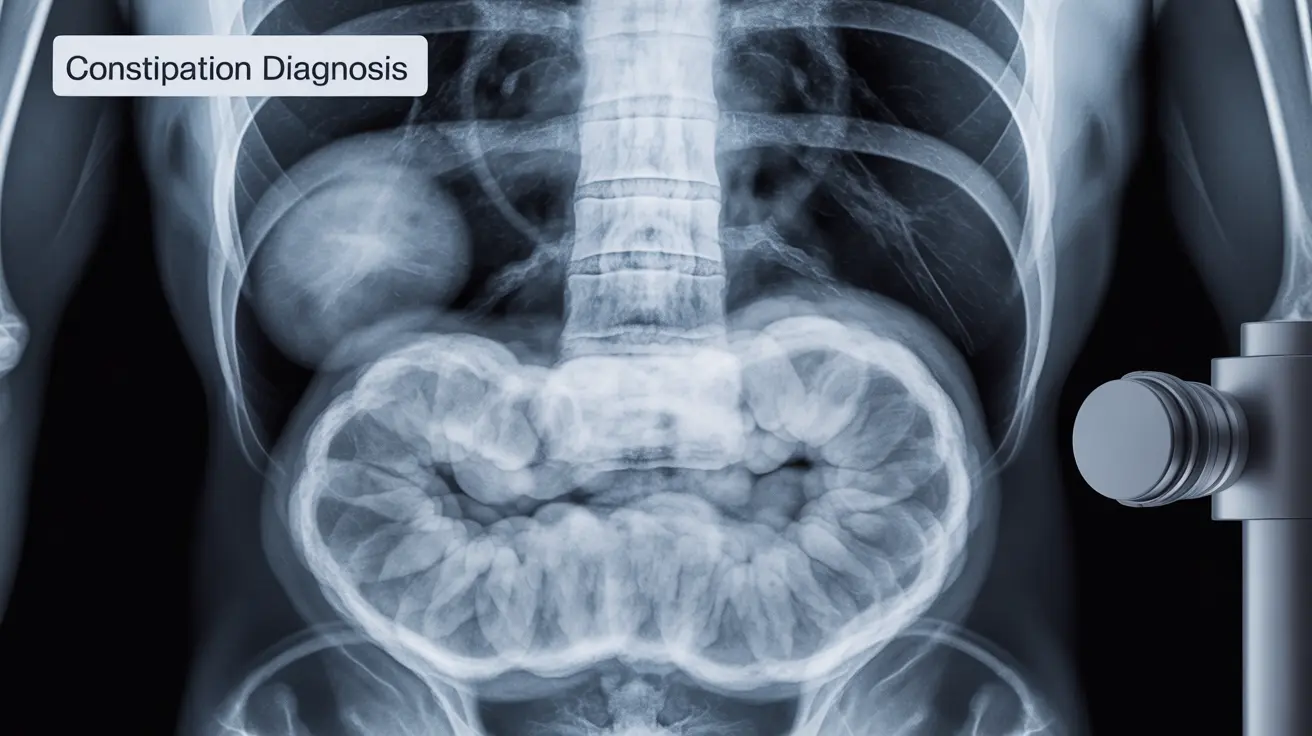When dealing with severe constipation, healthcare providers may recommend an X-ray to assess the extent of the problem and determine the most effective treatment approach. X-ray imaging can be particularly valuable in diagnosing fecal impaction and ruling out other serious conditions that may be causing constipation symptoms.
This comprehensive guide explores when and why doctors use X-rays for constipation, what they can reveal about impacted stool, and how this diagnostic tool helps guide treatment decisions.
Why Doctors Order X-rays for Constipation
Healthcare providers typically don't order X-rays for routine constipation cases. However, certain situations may warrant this imaging test:
- Severe, persistent constipation not responding to standard treatments
- Suspected fecal impaction
- Signs of bowel obstruction
- Unexplained abdominal pain
- Significant changes in bowel habits
What a Constipation X-ray Can Reveal
An abdominal X-ray provides valuable information about the state of your digestive system:
Visualization of Impacted Stool
X-rays can clearly show the location and extent of fecal matter buildup in the colon. Impacted stool appears as dense, white areas on the image, helping doctors assess the severity of the condition.
Signs of Bowel Obstruction
The imaging can reveal potential blockages or abnormalities in the intestinal tract that might be contributing to severe constipation.
Benefits and Limitations of X-ray Diagnosis
Advantages
X-rays offer several benefits for diagnosing constipation-related issues:
- Quick and non-invasive procedure
- Provides immediate visual confirmation of impaction
- Helps determine the most appropriate treatment approach
- Can identify other potential digestive issues
Limitations
While valuable, X-rays do have some limitations in diagnosing constipation:
- May not show soft tissue problems
- Cannot detect certain underlying causes of constipation
- Exposure to small amounts of radiation
- May not be necessary for routine constipation cases
Treatment Following X-ray Diagnosis
Once an X-ray confirms impacted stool, treatment options may include:
- Manual disimpaction
- Stronger laxatives or enemas
- Increased fluid intake
- Dietary modifications
- Prescription medications
- Prevention strategies to avoid future impaction
Frequently Asked Questions
When is an X-ray necessary to diagnose severe constipation or impacted stool?
An X-ray becomes necessary when constipation is severe, persistent, and unresponsive to standard treatments, or when healthcare providers suspect fecal impaction or bowel obstruction. It's also warranted when patients experience significant abdominal pain or dramatic changes in bowel habits.
How does a constipation X-ray show fecal impaction and what does it look like?
On an X-ray, impacted stool appears as dense, white areas within the outline of the colon. The imaging clearly shows the location and extent of the impaction, allowing doctors to assess its severity and determine the best treatment approach.
What are the limitations of using an abdominal X-ray to diagnose constipation?
Abdominal X-rays cannot detect soft tissue problems or certain underlying causes of constipation. They expose patients to small amounts of radiation and may not provide enough information for complex cases, which might require additional diagnostic tests.
How is fecal impaction treated once it is confirmed by an X-ray or physical exam?
Treatment typically involves a combination of manual disimpaction, strong laxatives or enemas, increased fluid intake, and dietary modifications. Healthcare providers may also prescribe medications and develop prevention strategies to avoid future impaction.
Can a constipation X-ray help differentiate between simple constipation and bowel obstruction?
Yes, X-rays can help distinguish between simple constipation and bowel obstruction by showing the pattern of fecal matter distribution and identifying any structural abnormalities or blockages in the intestinal tract that might indicate an obstruction.




